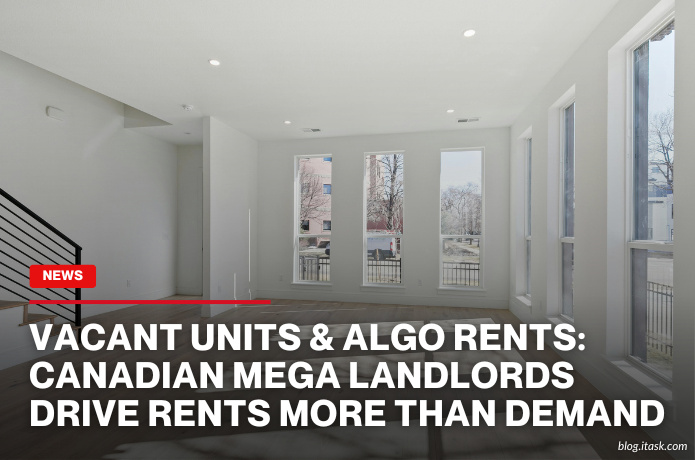Vacant Units & Algo Rents: Canadian Mega Landlords Drive Rents More Than Demand
Vacant Units & Algo Rents: Canadian Mega Landlords Drive Rents More Than Demand

Canada’s fast‑rising rents are not just about too few apartments or too many renters. A new study shows Canada’s biggest landlords—large institutional firms like REITs and private equity—are pushing up rents more than actual demand. These mega‑landlords use methods like keeping units empty, pricing by algorithms, and pushing tenants out on purpose to get higher rents—even in areas where demand isn’t rising much.
Researchers looked at rental data from about 1,600 apartment buildings in Toronto between 2022 and 2024. They compared what large financial landlords were charging with what smaller, family‑run or single‑unit landlords were asking. The results were striking: buildings owned by big financial firms were charging about 44% more than average rent for a neighbourhood—roughly \$670 per month more. In contrast, family chains charged about 30% above average, and single‑property landlords about 15‑22% above.
Quarter‑by‑quarter rent hikes also showed a big gap. Financial landlords raised rent by around 5.04% per quarter—adding nearly \$93 each time. That works out to about 21.5% growth in a year. Smaller landlords raised rent more slowly—family‑run at about 4.99%, single‑owners at 3.61%, and non‑profits only 1%. According to regression analysis, the same unit rented by a big financial landlord cost 13.8% more than if it were owned by a single‑property owner—roughly a \$323 difference on a unit that would otherwise rent for about \$2,187.
The study highlights a troubling trend: tech tools like algorithmic pricing platforms sometimes suggest leaving apartments empty to create artificial scarcity and push future rents higher. This lets big landlords act almost like a cartel—even without explicit agreement—because they rely on the same tools and public data to set pricing. Some of these strategies have already drawn attention from regulators in other countries over antitrust concerns.
Worse, targeted areas include low‑income, racialized neighbourhoods in Toronto known as Neighbourhood Improvement Areas. There, financial landlords charged about 20% more than other landlords, capturing what the study calls a “rent gap” in undervalued communities. Critics argue this isn’t just gentrification—it’s systematic rent extraction from vulnerable residents.
The big picture: rent hikes across Canada may stem more from financial strategies than true housing demand. As large landlords keep growing, the study warns affordability and housing stability could get worse. Meanwhile, policymakers often support these firms—claiming financialized housing is the solution—rather than restrain their influence. That informs a tougher look at why shelter instability might be intentional, and not a side effect.
